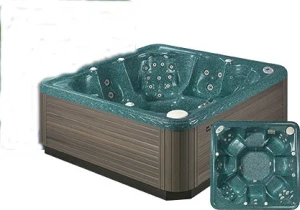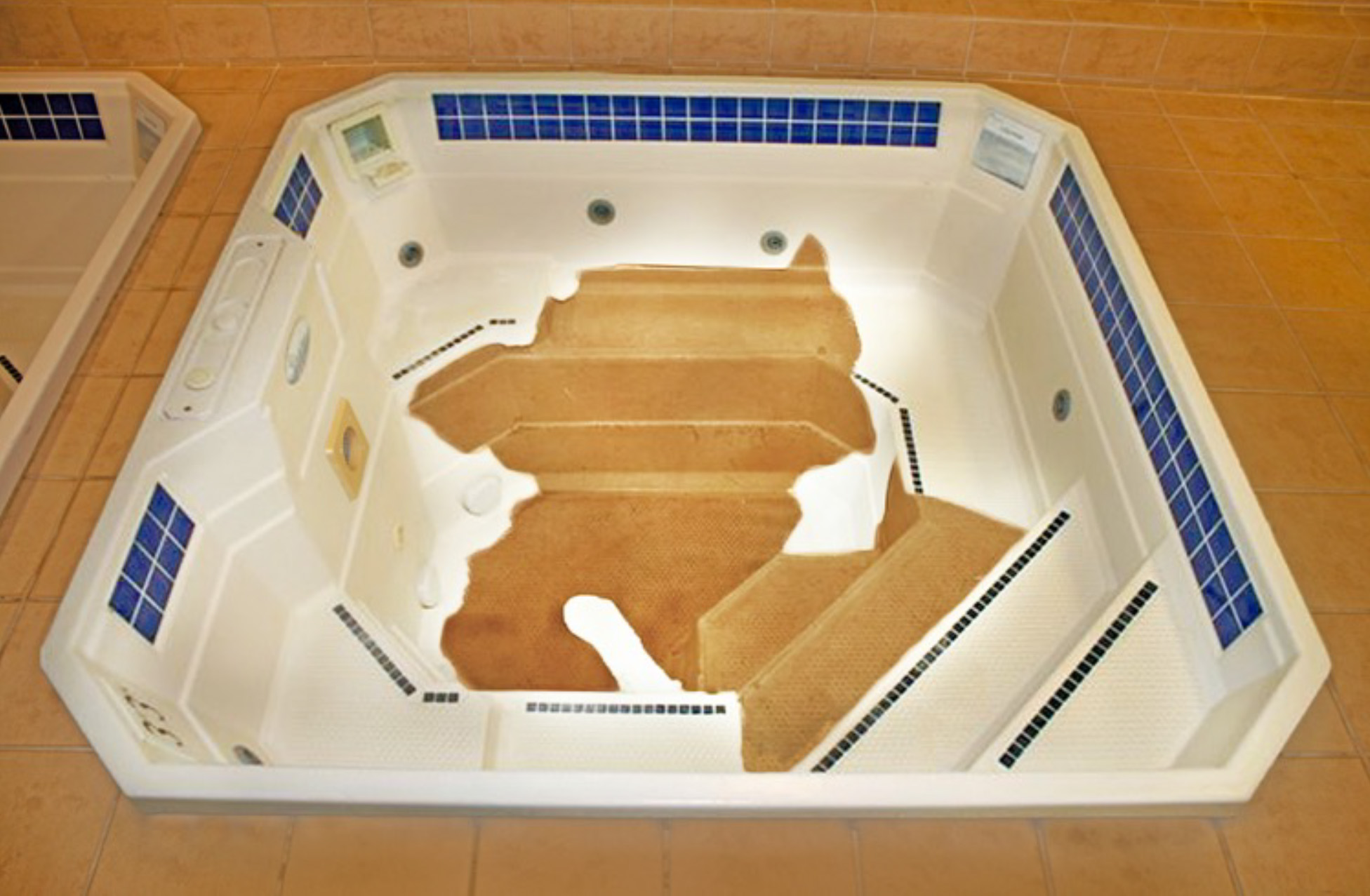When faced with a hot tub exhibiting large chips or peeling surfaces, especially in commercial settings like hotels, the question often arises: can the damage be reversed without a complete replacement? The FRL (Fiberglass Reinforced Lining) System emerges as a promising solution, capable of renewing the hot tub surface to its former glory. However, understanding the nuances of applying a fiberglass coating over a plastered spa is crucial for ensuring the longevity and success of the resurfacing project.
Applying fiberglass coatings over plastered surfaces has been a common practice, not just for hot tubs but also for swimming pools. While this method has seen a fair share of success, it’s important to note that it comes with greater risks for failure in pools than in hot tubs due to the differing scales of application and the underlying plaster conditions.
Resurfacing a plastered swimming pool with fiberglass has historically seen a high rate of failure, primarily because the deteriorating plaster underneath continues to compromise the integrity of the fiberglass overlay. This leads to adhesion problems and, eventually, the failure of the composite structure. Therefore, while it may seem like a lucrative opportunity, the risks associated with re-surfacing plastered swimming pools are significant.
For hot tubs, the scenario is somewhat different. The smaller scale and the contained environment of a hot tub allow for more controlled application and curing conditions, making the FRL system a viable option for complete resurfacing. Before committing to such a project, a thorough inspection of the existing plaster is essential. The plaster must not be too brittle or chalky, which are signs of failure due to chemical overuse.
The resurfacing process involves grinding and filling the substrate to ensure smoothness and optimal adhesion of the FRL resin. This preparation exposes the core plaster while potentially leaving some of the original glaze in place. If the inspection confirms that the plaster is in good condition, resurfacing with the FRL system is advisable, offering a smoother, less porous, and more durable finish compared to the original plaster.
The FRL system not only provides a long-term solution for plastered hot tubs but also enhances the ease of cleaning and maintenance. Its application over peeling plaster comes with its challenges, necessitating a clear understanding of the risks and potential for both success and failure.
For those considering the FRL system for hot tub resurfacing, it’s imperative to use good judgment during the inspection and preparation stages. This careful approach, combined with the unique benefits of the FRL finish, can significantly extend the life of your hot tub, making it a worthwhile investment for both older and newer models.
Whether you’re looking to revitalize an old hot tub or ensure the longevity of a newer installation, the FRL system presents a compelling option for resurfacing. With proper application and preparation, it promises to restore the beauty and functionality of your spa, allowing guests and users to enjoy a renewed bathing experience for years to come.



Find all the essential information about Multi-Tech Products, from contact details to terms of service, in our comprehensive footer section. We’re here to help you with all your surface repair needs.

Your order has been confirmed & it is on the way. Check your email for the details